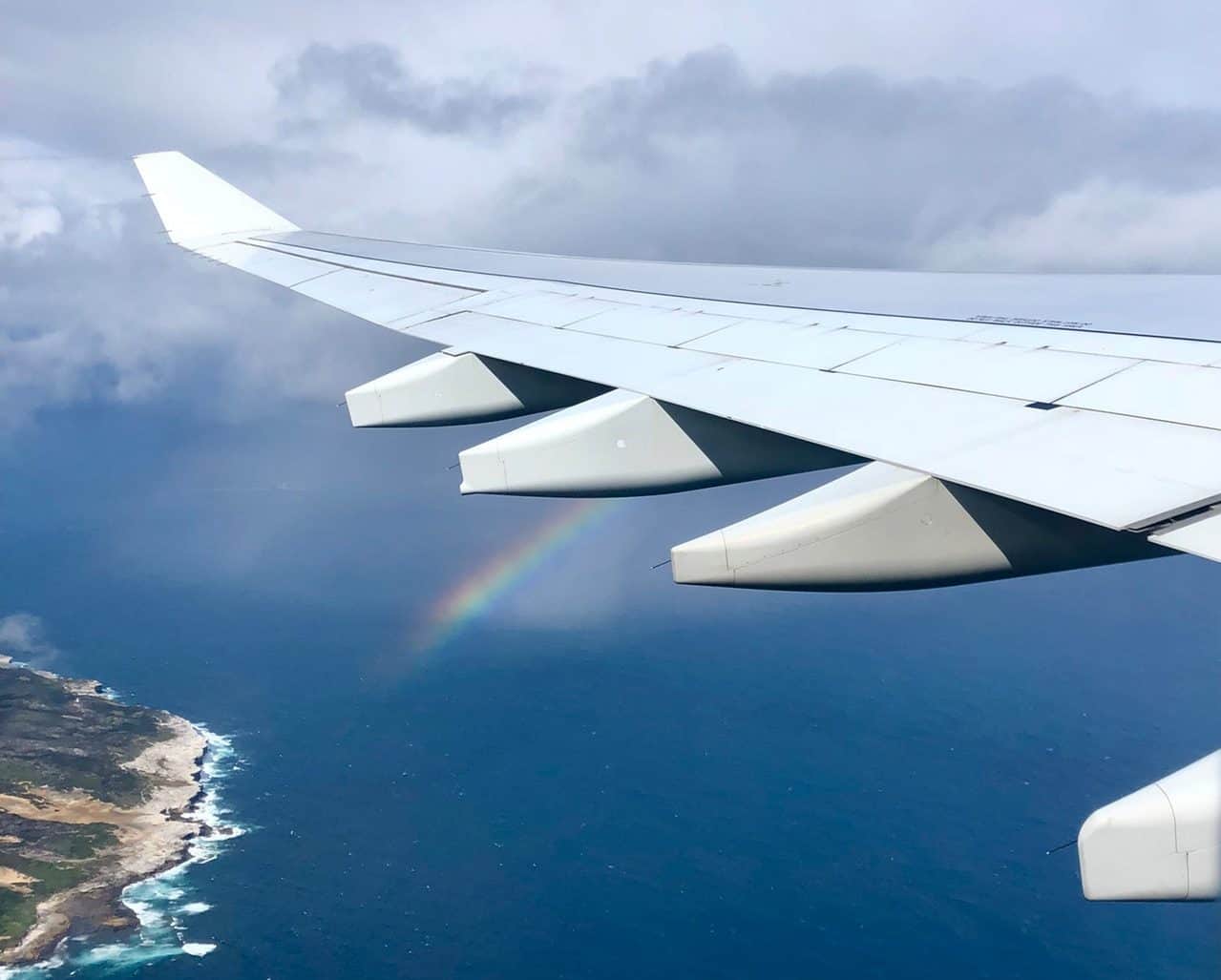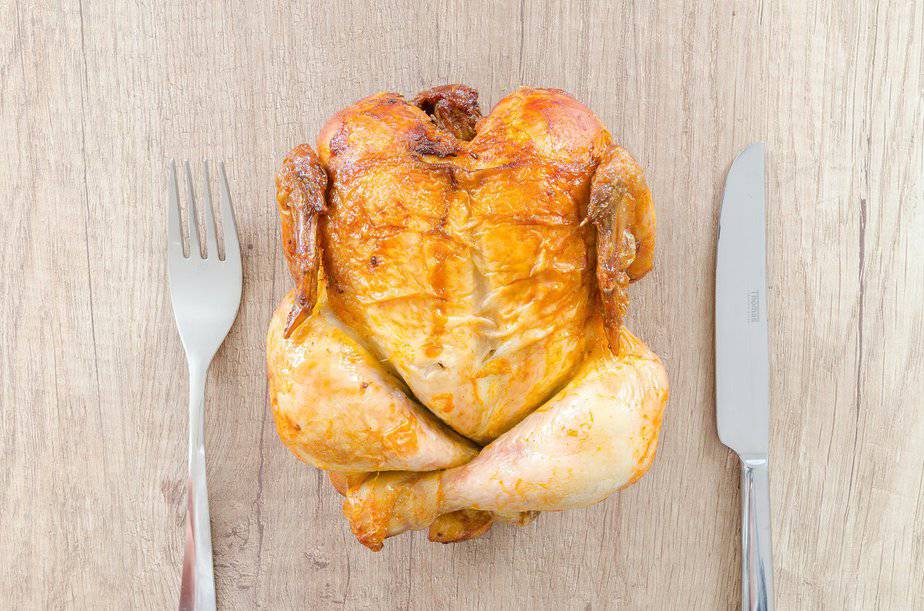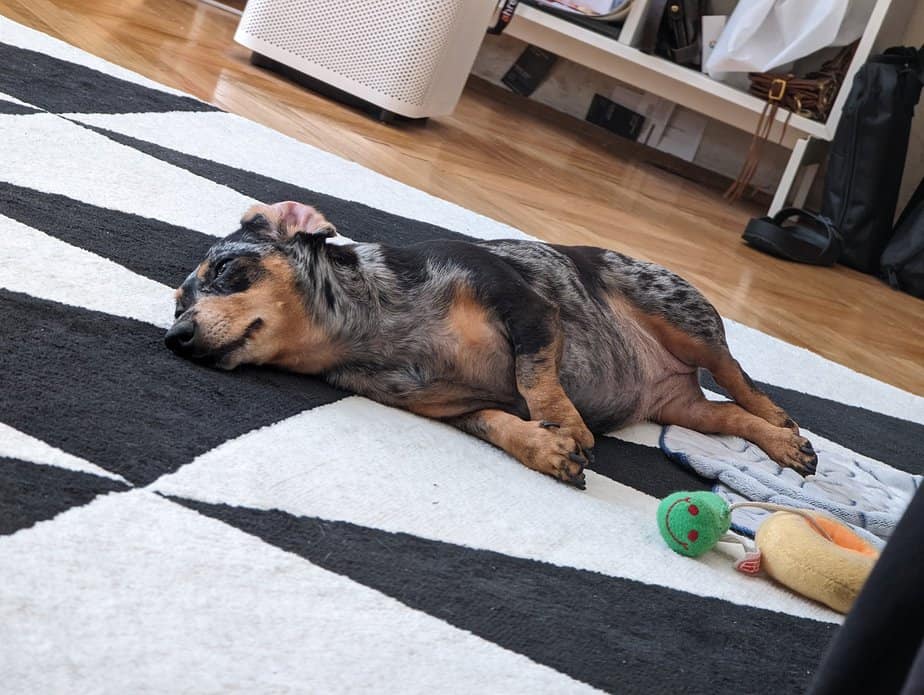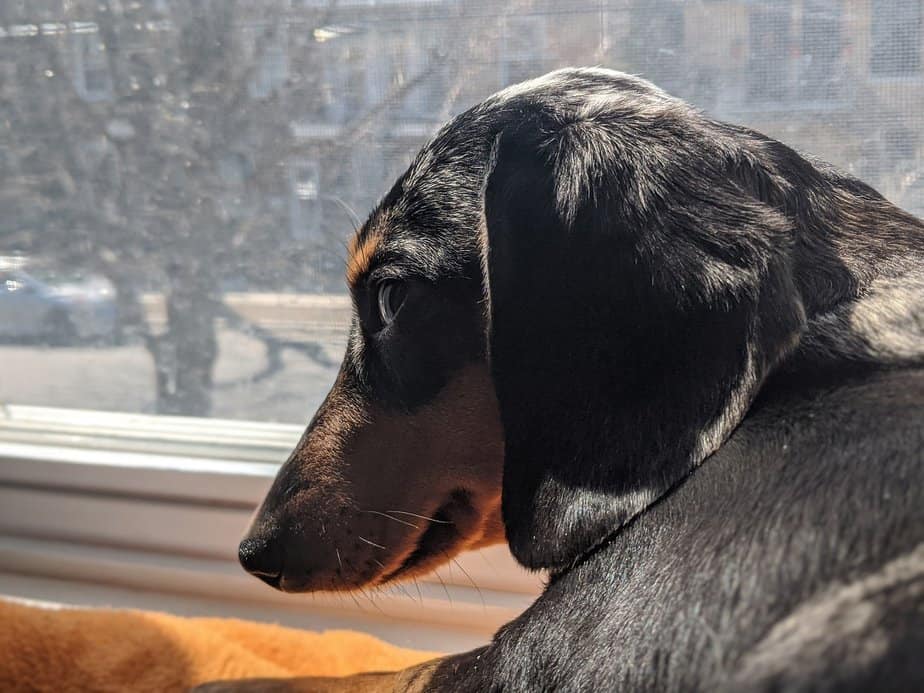The airline accepts pets! Indeed, Transavia is one of the airlines that accepts the transport of animals. There are conditions for cabin and hold travel.
Requirements to Travel With a Dog:
- The animal must be at least 3 months and 21 days old.
- The animal must travel accompanied by a human passenger.
Transavia Allows Dogs to Travel in the Cabin
Here are the requirements you should know about :
Your dog must travel in a cage or carrier bag. Your pet must be placed under your seat. Complete prohibition to open the bag or move it. We can bring a hand luggage in addition to the dog. That’s good to know because that’s not the case for all airlines.
Cabin Travel Only For Snub Nosed Breeds of Dogs
Animals with a short snout (often called a snub nose) are only allowed in the cabin. A trip is stressful for an animal. If we add to this breathing difficulties that can be experienced at high altitudes, it is understandable that Transavia does not want to take any risks with snub-nosed animals. Indeed, they are known to have some breathing difficulties. This concerns:
- The pugs
- The boxers
- The bulldogs
- The Pekingese
- Persian cats
- Conditions for the bag or travel cage for cabin flights
- In addition, a travel bag must comply with the following conditions:
Bag Requirements For Cabin Travel
- It must be an official bag, like those sold in pet stores or on Amazon. No DIY.
- The bag must be able to close completely
- The bag must have ventilation holes
- The pet must be able to look outside the bag
- Your dog must have enough space in the bag to move
- Dimensions of the bag or travel cage for cabin flights
- Length 47 cm x width 30 cm x height 27 cm max
- Maximum weight accepted in the cabin
- The weight may not exceed 10 kg, including the bag
How Much Does it Cost to Fly With a Dog in the Cabin With Transavia?
40 € per one-way ticket.
Emotional Support Animals
Dogs and cats with a medical certificate less than one year old, issued by a psychiatrist attesting to the need to have a companion animal, may fly free of charge in the cabin.
Policy for Emotion Support Dogs
- The emotional support animal must be in good standing and on a leash at all times.
- The animal cannot occupy an additional seat or obstruct emergency exits or corridors.
Flying With a Dog in the Hold
Dogs and cats can be transported in the hold or in the cabin. Transavia has a section dedicated to animals that is heated in the hold. This part of the aircraft is equipped with a climate and pressure control system. It is important that the cage meets the standards of the International Air Transport Association (IATA).
Dimensions Requirements for the Dog Transport Cage
- Length 102 cm x width 69 cm x height 76 cm max.
- Maximum weight of the dog in the hold
- The dog and the transport cage must weigh a maximum of 75 kg in total
- It is important to ensure that your dog can stand in the cage, turn in the cage and lie comfortably.
- No toys in the cage
- The cage must be made of fiberglass or hard plastic
- Metal or wooden cages are prohibited
- You can put a blanket or newspapers on the ground
Price to Travel With a Dog in the Hold
60 € per one-way ticket, 120 euros for a round trip.
Number of Animals Allowed Per Passenger
You can book a maximum of 2 pets per person per flight.
Fighting Dogs Are Prohibited on Transavia
Here is the list of fighting or attack dogs that are prohibited on Transavia flights:
- American Staffordshire terriers (pitbulls) or comparable dogs (e. g. Staffordshire Terriers or Bull Terriers);
- Mastiffs, or comparable dogs;
- Tosas, or comparable dogs;
- Rottweilers, or comparable dogs.
Pet Travel Documents Required
- A passport if the country of origin produces one. The passport must have the following information in it:
- Proof of vaccination against rabies (vaccination at least 21 days before the day of departure).
- The information required by the destination country.
- A microchip (or a tattoo done before July 3, 2011 still visible).
- For visits to Malta, proof of de-worming treatment between 5 and 24 hours before departure is also required.
Tips for travelling with your dog on Transavia
- It is necessary to find out about the conditions of transport in the country of destination.
- You must take your dog out to do his business shortly before departure.
- You must be careful not to feed or drink your dog less than 2 hours before departure or you may have a bad surprise on arrival…
Prohibited Countries :
Transavia cannot transport pets in some countries because local airports do not accept them. Here is the list of destinations where Transavia does not accept to transport dogs:
- The United Kingdom
- Ireland
- Scotland
- United Arab Emirates
- …and Chambéry in France…





3 thoughts on “Does Transavia Accept Dogs? Airline Travel Policy”
bookmarked!!, I really like your web site!
I’m sharing my awful experience with Transavia – It’s a long post, but it might be useful to anyone planning to travel with this airline, especially those planning to travel with a pet in the cabin.
On 7/7/21, I traveled from Amsterdam to Verona with Transavia. I was carrying my dog, which is small enough to be carried in the cabin. I would like to mention that I had already traveled with Transavia in the previous months with the same dog, in the same pet carrier, leaving from the same airport, and that we never had any problems. He weighs 8 kg and he travels in an official pet carrier which has the maximum dimensions allowed by most airlines, including Transavia. We bought the biggest carrier we could find for him to be comfortable in and to still comply with the airline’s regulations. At check-in, a supervisor told me “You have to buy a bigger bag so that your dog is more comfortable”. When I told her that a bigger bag would not comply with Transavia’s regulations anymore and that we had already traveled without any problems with the same carrier and the same dog on Transavia flights in the past, she said “We prefer the bag to be a little bigger, you need just half a size extra, so that the dog is more comfortable”. At that point, I rushed to the luggage shop to buy a bigger bag, but the shop was closed, so I went back to the check-in area, let the supervisor know and asked her to go through Transavia requirements together to see which requirement I was not complying with. She was insisting that the dog should be able to stand up: my dog can stand up and the bag can be closed when he’s standing, only his head pops out if he’s standing out (but not when he’s laying down), which we thought was not a problem, since it’s more comfortable for the dog to be able to have his head out and because on previous Transavia flights we saw people carrying their dog on normal bags that could not even be closed fully and where the only option was for the dog to have his head out the whole time. On the Transavia website there is no mention of the pet being able to stand up, just to move around comfortably, which is what our dog can do in his carrier. The carrier is also fully closable. Eventually, the supervisor talked to a second supervisor, and they said “You can take your dog with you but it’s your responsibility”. Obviously, my dog is my responsibility, I want the best for my dog, and I know what my dog is comfortable with. He’s used to being in that carrier and he’s comfortable enough, so much that he actually always sleeps during the whole flight. Moreover, I know that napping for an hour and a half in a carrier during a flight is the best option for him: being left at home with strangers is not, and I’m sure whoever has a dog or a cat would agree with me.
After more than an hour of flight, during which my dog had been sleeping in his carrier below my seat without letting out a single bark or moan, a flight attendant stopped by and told me to close the bag. The zip on the top of the carrier was open so that I could see my dog while he was sleeping. I closed the zip as much as possible but not completely, so that his head, which was resting on the edge of the carrier while sleeping, could still be in the same position and I did not have to wake him up. When I asked if it was fine like that, the flight attendant insisted that I had to close it completely, and when I asked why exactly (since the dog was sleeping and had not caused any trouble), her answer was “Because if the bag is open then the dog runs off and we have to chase him”. When I pointed out that the dog was sleeping and that he would not run off anywhere because he was leashed to the bag (all appropriate pet carriers have an internal leash to make sure the dog does not jump out at any moment), the flight attendant kept insisting. Since the dog by that moment had woken up and was alert because of what was going on, I tried to pet him so that he would sit down and I could close the bag completely without stressing him out unnecessarily. While I was doing this, I asked the flight attendant if any of Transavia’s policy regarding flying with pets had changed, since we never had any problems with Transavia before and we had seen people carrying their dog in a simply should bag before, that could not even be closed completely. When I asked this (always politely), she snapped back saying “Are you going to close the bag or not?”. At which point I answered (again, politely, unlike she had just been) “I’m sharing my previous experience with you and I expect you to be polite with me”. She did not answer, walked away, and never came back. After the extremely rude and unprofessional attitude of the flight attendant and since the dog was not causing any trouble or discomfort to anybody, I left the end of the zip slightly open so that his head could rest as it was before and he could keep on sleeping comfortably.
On the 9th of September, I received a letter from Transavia saying that I have been placed on the Transavia watchlist since I have been (quoting) “found guilty of not adhering crew instructions regarding pet” and that “these are very serious facts and Transavia has therefore decided to put you on the watchlist. Consequences of placement on watchlist is that you must report to the check-in counter on flights operated by Transavia for a period of 3 years. After reporting you can be checked for your behavior. The check will take place through a questionnaire with you before departure of the flight. As a result of the conversation, Transavia can still refuse you for the flight for reasons of order and / or safety. In case of refusal, you are not entitled to a refund”.
Needless to say, I was not planning to fly with Transavia ever again in my life after such a bad experience, with or without any pets, but I find it shocking to see how objective regulations can be interpreted so differently by different employees and how Transavia allows them to do so. Again, I would like to stress that we were allowed to fly with Transavia without any problems before and with exactly the same conditions, and that we saw other people traveling in such a way with Transavia before too. In fact, this time we had chosen to travel with Transavia again solely based on the positive previous experience we had when traveling with our pet. I strongly suggest Transavia to reconsider their requirements for flying with a pet, because there is no dog or pet who will be able to move freely and stand up like their employees wished to in a carrier with the maximum measurements they indicate, except from small cats and chihuahuas. And, in that case, there won’t be any cat or chihuahua weighting more than 4 kg, so a limit of 8 kg is only misleading. Transavia may also consider providing their employees with a visual reference of a carrier that is approved to fly, because in previous flights simple shoulder bags were allowed in, which can be also misleading.
Moreover, placing passengers on a watchlist because of a polite exchange with a very rude employee is also quite an interesting strategy for an airline, in my humble opinion. What Transavia should consider instead maybe is instructing their employees to be polite at all times, and not to walk away without saying anything, especially when in their head they’re planning to request to place the passenger on a watchlist. Shouldn’t the passenger be warned, if a situation is so bad (which was not the case this time, of course) to require such a measure? The passenger sitting next to me (whom I do not know personally) also expressed his surprise at the rude attitude of the flight attendant and wondered why they were being so difficult with a dog that was sleeping and not bothering anyone.
Thanks a lot Irene for sharing your experience!